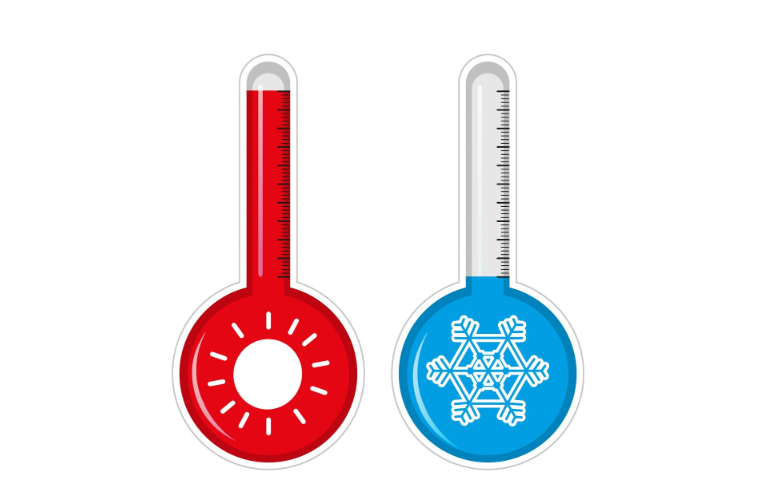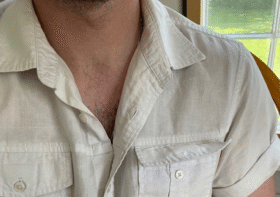Why You Should Not Worry About Your Outfit’s “Temperature”

There are certain things in menswear that I am convinced only gained traction with the rise of the internet.
Things like matching your watch strap to your shoes. Back before the internet allowed us to live our lives primarily through images consumed by strangers, men just wore the one watch they owned with whatever outfit they decided to wear that day and went about their lives.
No one spent time critiquing whether the shade of their watch strap coordinated with the shade of their shoe leather. Men of yore had more important things to do than worry about that kind of nonsense.
That brings me to the subject of today’s article: “color temperature”.
Have you guys heard of the concept of “color temperature” when it comes to an outfit?
I’ve seen people mention it online enough times for me to want to address it here, as I believe it is definitely one of those “this is stupid and only happens on the internet” things.
Basically, it means that an outfit, or a piece of an outfit, has a certain “feel” to it, which is either “cool” or “warm”. Usually, colors/shades like navy blue and white are considered “cool” while greens, tans, and yellows are considered “warm”.
It’s usually advised to not combine different color temperatures in a single outfit.
However, people get way too “into the weeds” when it comes to this concept. It’s one of the things that turns well-meaning dudes off of menswear when they stumble upon it.
I once saw a post on StyleForum of a gentleman in a light blue, checked sport coat and chinos. The jacket was primarily a “baby blue” color, which was appropriate for the season (summer). The pants were a bit more yellow in hue than a traditional “khaki”, but still definitely khaki.
Some of the comments about the outfit suggested the jacket and pants didn’t go together because the “color temperatures” clashed. They said the jacket was of a “cooler” temperature (since it was an icy blue) than the pants, which were a “warmer” temperature given their yellowish shade.
This baffled me.
In no universe does a blue jacket NOT go with khaki pants. I don’t care exactly what shade each item is, a blue jacket goes with tan pants 100% of the time. Sure, some shade combinations might look better than others. But the outfit will still look good.
What concerned me about the whole thing was that I knew that some regular guy was going to see that interaction and second-guess an outfit of his own. He might start to think of his outfits through the lens of “color temperatures” and start to tie himself in knots trying to figure out what goes with what.
This hypothetical man might think, “Woah, wait a second… I thought a blue jacket and khakis was a pretty classic and safe choice. But now I have to examine exactly what shade each piece is to make sure that the “temperatures” don’t clash? Ugh! This just added a whole new level of complexity to trying to figure out how to dress nicely!”
The concept of “color temperatures” needlessly complicates something that isn’t all that complicated to begin with.
Sure, there are things in your closet that won’t pair well, but it has nothing to do with their “temperatures”.
I feel it’s much better to think of your wardrobe in levels of formality rather than “temperature”. For instance…
Part of my wardrobe consists of things like my navy or grey suits, my white French-cuff shirts, my black shoes, my grey or navy ties, and my silver cufflinks. That portion is conservative, formal, and rather stark. I would wear that stuff to things like interviews or to a nice event in the evening. The other part of my wardrobe consists of my grey or brown tweed sport coats, cable-knit sweaters, oxford-cloth shirts, burgundy corduroy trousers, green or rust ties, and brown loafers. That portion is more casual, rugged, maybe a bit rumpled at times.
The latter group is definitely more “earth” toned and one could argue the “temperatures” are warmer because of that. But that’s more because casual menswear generally has more of a “country” feel to it. I might separate a brown tweed jacket from a navy suit by saying the former has a “warmer” feel, but I wouldn’t make the same distinction between two equally casual country jackets, as in, I wouldn’t hold up two tweed jackets and say one is “warmer” or “cooler” than the other simply based on their shade.
That’s just splitting hairs and doesn’t lead to anyone being a better dresser.
The bigger problem is men combining things of incongruent formality levels (shined black shoes with khaki chinos, for instance, or tan country shoes with a dark, worsted suit) rather than combing things of incongruent “temperatures”.
So, if you ever come across internet comments or advice referencing “color temperatures”, rest assured that you can, more than likely, chuck that advice in the pail.
I mean, at some point we need to just put on our damn clothes and live our lives, don’t we?




Leave a Reply